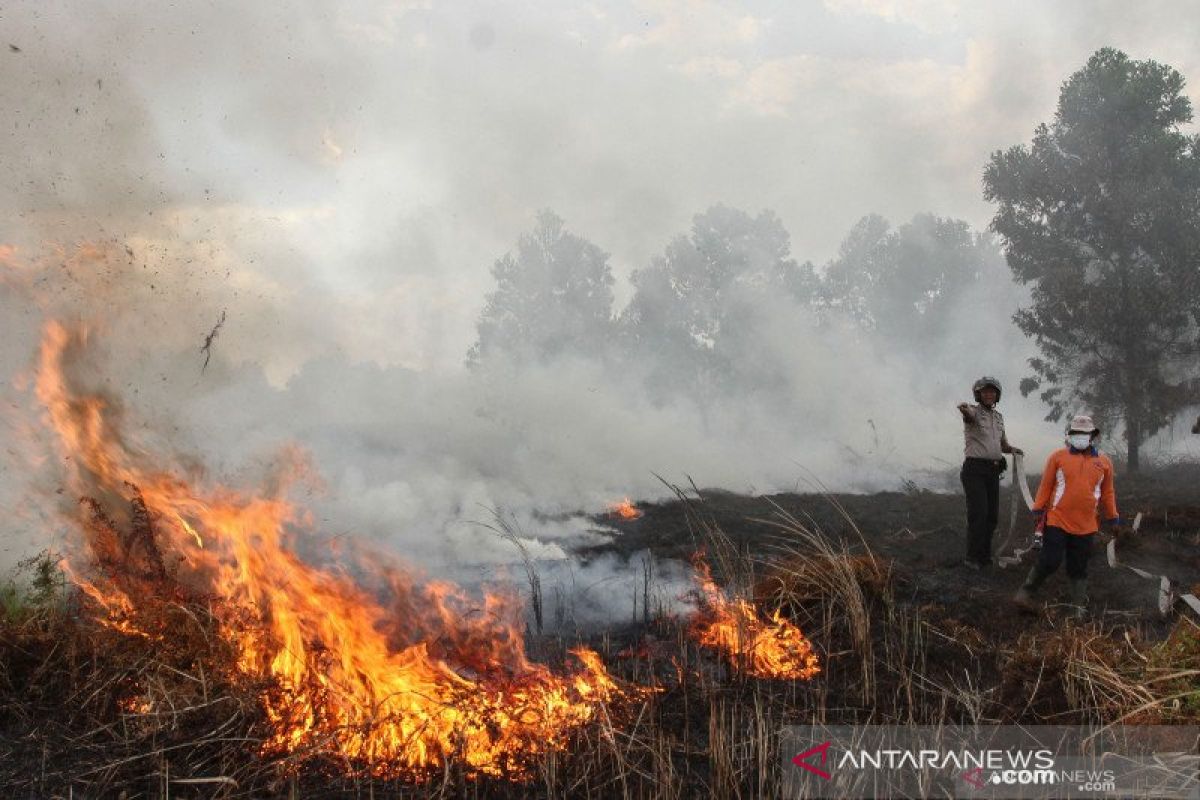Film enthusiasts may be familiar with the thrilling scene in The Perfect Storm (2000), when Captain Frank William 'Billy' Tyne Jr., played by George Clooney, and ship crew Robert 'Bobby' Shatford, played by Mark Wahlberg, desperately try to turn their ship, Andrea Gail, to save themselves from a huge wave caused by a storm north of the Atlantic ocean.
Although the crew succeed, they are eventually swallowed by a much larger wave to be never found.
The film, an adaptation of a non-fiction book by Sebastian Junger (1997), retells a true story about a fishing ship from Gloucester, Massachusetts, United States, in 1991. The ship was lost at sea after the Grace Storm hit the Atlantic Ocean.
Yet the term "perfect storm" apparently does not point at a singular meteorological phenomenon.
The formation of the 'perfect storm' immoralized in the movie involved a large high-pressure system moving from the direction of cold Canada towards the coast of New England and eventually meeting a slow-moving warm low-pressure system, forming a cyclone known as Nor'easters.
The cyclone absorbed the energy from Hurricane Grace south of it, which was actually starting to weaken but leaving warmth and moisture behind.
The combination of cold and warm temperatures, plus the humidity from the remnants of the storm, amplified the powerful cyclone and turned it into the "perfect storm" of November 1, 1991.
Related news: Finance Minister highlights threat of climate change in Indonesia
The Boston National Weather Service noticed a buoy located 97 kilometers west of where the Andrea Gail was last seen to have recorded a wave height of 22 meters in 10 hours, when the extra tropical cyclone's intensity was rapidly increasing. Peak wind speeds were recorded at 120 kilometers per hour.
The United States National Climate Data Center pegged the material losses from the three-day storm at more than US$200 million, or around Rp390 billion (in 1991, US$1 was roughly equal to Rp 1,950). All the damage was due to waves that reached up to 10 meters in height, which struck the east coast of North America.
Hundreds of homes were destroyed in Massachusetts. More than 38 thousand people lost access to electricity and 13 lives were lost in the disaster.
Another film The Day After Tomorrow (2004), which was inspired by Art Bell and Whitley Strieber's The Coming Global Superstorm (1999), portrays the horrors of another type of climate catastrophe: the cracking of the Larsen Ice Shelf in the Antarctic Peninsula.
The most terrifying part of the film is when Jack Hall, the protagonist (played by actor Dennis Quaid), who is a paleoclimatologist must save himself and his unconscious partner from flash freezing while trapped at the center of a superstorm. They survive after making it to a restaurant and starting a fire.
Sam, the son of Jack Hall (played by Jake Gyllenhall), does the same thing when he and his partner run back into the warm room they create in the New York Public Library to save themselves from flash freezing when the same superstorm moves right above them. The temperature falls to minus 101 degrees Celsius in a very fast time, freezing everyone and everything in a matter of seconds.
The explanation of the incident was already presented by Jack Hall at the beginning of the film, when he presented the hypothesis of his research in front of world leaders at a climate change conference in India. He found evidence buried 10 thousand years in the polar ice caps that the concentration of greenhouse gas emissions showed that the warming that occurred at that time had actually pushed Planet Earth into an Ice Age that could last for two centuries.
Related news: Indonesia has potential to be 'climate superpower': DPPPI chief
Scientists' worries
The two films, The Perfect Storm and The Day After Tomorrow, were invoked during the socialization of the IPCC Sixth Assessment Report (AR6) from Working Group I titled 'Climate Change 2021: the Physical Science Basis', held by the Directorate General of Climate Change Control of Environment and Forestry Ministry on August 31, 2021.
It is no easy feat to convey the message of the IPCC report, which is the result of an assessment of 14 thousand scientific publications from researchers around the world, to the public. Dozens of global scientists, who are members of the IPCC Working Group I, raised concerns regarding the condition of the Atlantic overturning circulation (AMOC) during the preparation of the report, deputy chair of IPCC Working Group I, Prof. Edvin Aldrian, said.
"In the IPCC report, what was mentioned was not the weakening of ARLINDO (Indonesian sea circulation and mixing), but what the IPCC feared was that Atlantic meridional overturning circulation, or the circulation of warm currents facing the European continent, which gives a sense of coolness in the summer, is expected to cause a shutdown," Aldrian informed.
Through their report, IPCC scientists have tried to bring up cases of low livelihoods but resulting in high impact events, the meteorologist and climatologist from the Agency for the Assessment and Application of Technology (BPPT) explained. Meanwhile, one other issue that IPCC is slowly starting to address is the loss of forest function in the Amazon, South America as a carbon sink, he added.
"It's even included in the 'summary for policymakers'. That's what is described by rare events but heavy impacts," he added.
Related news: Indonesia needs Rp3,461 trillion to tackle climate change: minister
AMOC is a zone-integrated component of surface and deep currents in the Atlantic Ocean. The flows toward the north are warm and contain high salinity at the surface, while the flows to the south are much colder and deeper, and they are part of thermohaline circulation, Aldrian said.
The circulation of currents in the Atlantic is an important component of the Earth's climate system, and is the result of atmospheric and thermohaline circulation, he explained. The frozen Arctic air masses are held thanks to the warm northerly ocean currents, while the cooler southward currents bring cool air during the summer in Western Europe, he said.
A shutdown occurs when the current flow is disrupted, such as through reduced salinity levels due to the large amount of fresh water mixed in due to melting of polar ice caps, and changes in seawater temperature, he added.
The heated discussion among IPCC scientists over AMOC, given the amount of literature on the issue, was confirmed by a researcher from the Oceanographic Research Center of the Indonesian Institute of Sciences (LIPI), Dr. Intan Suci Nurhati, who is the lead author of Chapter 9 of the IPCC report. That is the reason the issue has been included in the summary for policymakers, she said..
Related news: Indonesia needs Rp3,779 trillion to tackle climate change: Minister
The report states that since the 1950s, sea surfaces have been warming faster in the Indian Ocean and in the Western Boundary Currents, she noted. Meanwhile, ocean cycles have caused a slowdown in surface warming or cooling in the Southern Ocean, the equatorial Pacific, the North Atlantic, and the coastal upwelling system, she added.
Nurhati said that IPCC scientists have projected that 83 percent of Earth's sea surface would warm during the 21st century under any scenario. Heat waves that occur within the sea have also grown more frequent and last a long time, she noted. This is a threat to biodiversity because it would be gradually more difficult to recover, especially coral reefs, she added.
Both the ice sheet mass in Antarctica and Greenland will continue to slip away in the 21st century under any scenario, thus contributing to a global sea level rise by 2100, she added.
As a result of rising sea levels, extreme natural events will occur more frequently. What usually happens every thousands of years will happen in just a span of a hundred years, and what usually happens every hundred years will occur in just decades, she informed.
Chairman of the Indonesian Climate Change Control Advisory Council (DPPPI), Sarwono Kusumaatmadja, called the explanation of the IPCC scientists from Indonesia 'a scenario of a perfect storm'. Currently, it is necessary to carry out mitigation and adaptation, he said. Humans living in the 21st century live in a world full of threats and uncertainty, and their survival instincts are being tested, he added.
Kusumaatmadja said that the "perfect storm" is going hand-in-hand with the COVID-19 pandemic and other disruptions everywhere, and that is the challenge of the future. What the IPCC reports will be helpful in roadmap creation and changing behavior in the midst of a "perfect storm" that sees no end anytime soon, he remarked.
The COVID-19 pandemic, climate change, and the threat of biodiversity collapse are challenges to make humans more resilient, he said. They also serve as an opportunity for humans to learn from past mistakes and improve themselves to respect nature, he added. They should no longer have the pretense of conquering or manipulating nature, he remarked.
Related news: 1.5 billion workers to be affected by climate change: minister
Related news: Climate change impact as devastating as COVID-19 pandemic: minister
Editor: Suharto
Copyright © ANTARA 2021












